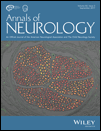How can we know if a patient is conscious when he/she is unable to communicate?
Disorders of consciousness can be differentiated in two types: the vegetative state, with no awareness from the patient and the minimally conscious state, with a certain degree of awareness.
The distinction between these two states is very important to provide a prognosis on the patient’s neurological outcome, to choose the more adapted treatment and to inform patient’s relatives.
All the tools that have been developed to determine consciousness until now, like EEG, fMRI or PET scan are naturally “neurocentric” (focused on the brain activity). These tools also require either heavy equipment or complex analysis.
Can the rest of the body, however, contribute with extra information about the state of consciousness in noncommunicating patients? YES
In this paper we show how the exploration of heart-brain interaction enable to improve consciousness assessment in patients.
Link toward the online version on Annals of Neurology.

Comment in Science TM
Press (french)
- Le Figaro
- Science & Avenir
- Le Quotidien du Médecin
- Top Santé
- Pourquoi Docteur?
- La Méthode scientifique (radio)
Press (espagnol)
Press releases
Reference: Raimondo F, Rohaut B, Demertzi A, Valente M, Engemann D, Salti M, Fernandez Slezak D, Naccache L, Sitt JD. Brain-heart interactions reveal consciousness in non-communicating patients. Ann Neurol. 2017 Sep;82:578–91.
